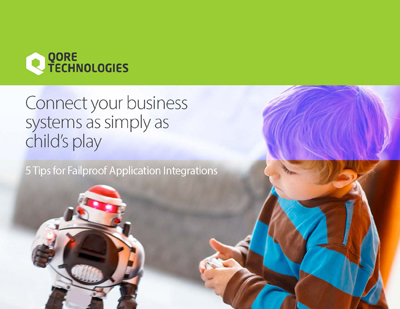6 Signs It’s Time to Upgrade the Way You Integrate.
Your business relies on its applications and data to drive operations. But the consolidation of technologies such as blockchain, mobile, cloud, social and the Internet of Things (IoT), comes with complexities many organizations can no longer address at scale. With an increasing volume of data and connections needed to keep pace with today’s digital business, legacy solutions may no longer be scalable or agile enough to effectively address these challenges.
At the heart of many of these issues is legacy middleware. In many instances, middleware has helped businesses solve tough IT problems, but in others, it has contributed to the problem, compounding the pain of integration initiatives so that companies try to avoid these projects as much as possible.
In response to the lack of agility and scalability in legacy middleware solutions, many enterprises are moving to an integration platform model. Integration platforms may be deployed on-premises, in the cloud or as hybrid solutions, and they provide business rules, prebuilt connectors, maps and transformations to develop integration flows and API management that allow businesses to better scale.
If you have seen or heard any of these warning signs, it may be time to rethink your legacy middleware:
1. Your IT team can’t support modernization initiatives with your current infrastructure.
2. You spend too much time and money on external experts to manage your middleware.
3. Your IT staff is overwhelmed and can’t take on any new projects.
4. Your team spends far too much time managing middleware deployments.
5. You can’t adequately support your company’s global operational needs.
6. You rely on a single individual or team to manage your middleware.
These issues suggest there’s a problem with your current middleware solution. That means you have three options:
1. Fix the current problem
by bringing in more resources to make your current processes more efficient.
2. Migrate from your legacy middleware
to a new integration platform to help you better manage integrations moving forward, with features like reusable building blocks, automatic error detection and recovery, a drag and drop development interface and multi-tenant segregation—a smart decision if you have the bandwidth to build and manage integration projects in-house but need a more scalable, automated solution.
3. Invest in an integration as a service (XaaS) solution
for rapid deployment with guaranteed, ongoing service levels—a low risk solution that’s not resource heavy.
Option one could be the cheapest in the short-term. You won’t need to shop around for a new solution, and you can work closely with your current team to create as many efficiencies as possible with internal knowledge. However, you run the risk of eating up even more of your IT team’s time—and you still won’t have a solution that’s agile enough to scale over time (and costing you much more in the long-run).
Options two and three can both move your business forward more quickly, but you’ll need to determine your appetite for building or buying. If you truly do not wish to put additional stress on your IT team, outsourcing an Integration-as-a-Service solution is your best bet. Doing so will also allow you to review the performance of your integrations regularly, reduce upfront costs, control ongoing expenses, actualize operational efficiencies and easily manage any changes needed in the future.
Ensure the solution you choose promotes scalability by allowing you to support unlimited users, connections and data volumes, with connections to all standard technologies and protocols, as well as inbuilt security and GDPR / CCPA compliant data processing. In doing so, you’ll remove a mountain of pressure on your internal team, freeing them up to work on more strategic projects.
Ready to Get Started?
Qore has helped global enterprises solve their integration challenges since 2006, from simple data synchronisation to high volume, business-critical transactions spanning multiple systems and technologies. We know the integration platform is only part of the story, which is why we combine our transaction-sure platform with configuration, testing and ongoing support as an all-in service, providing enterprises with rapid and flexible integration at very low risk.
Learn how Qore Technologies can help you reach your integration goals. Contact us today.


